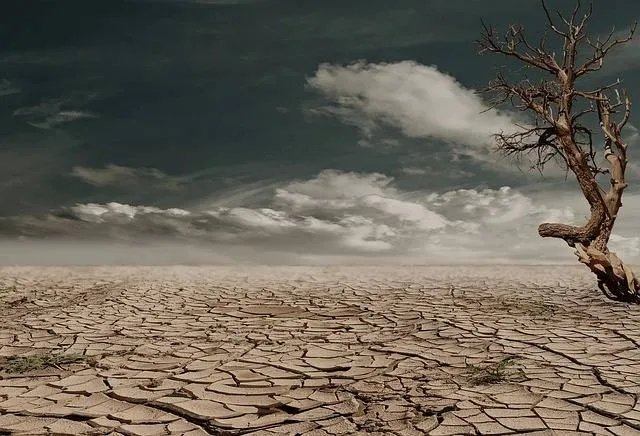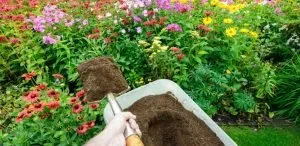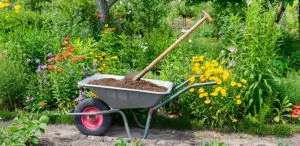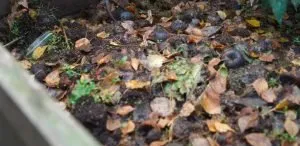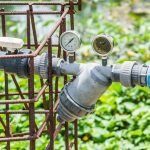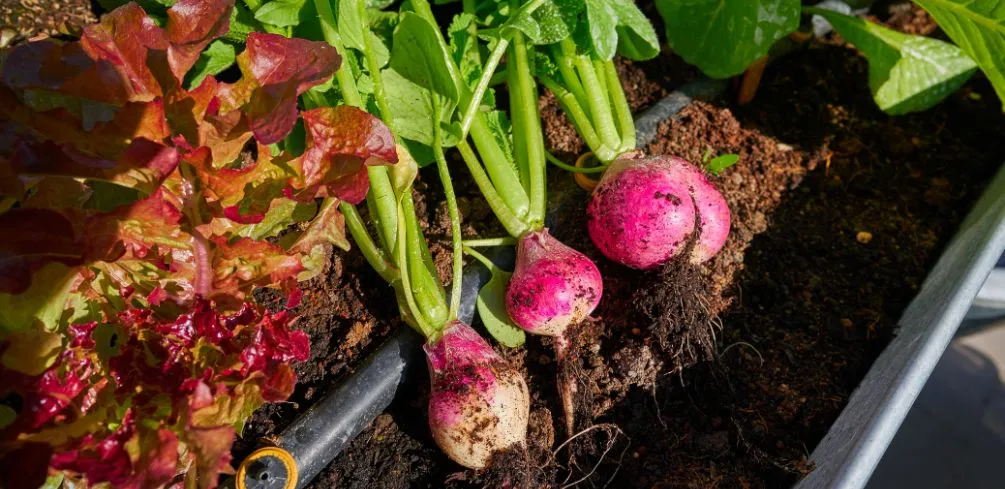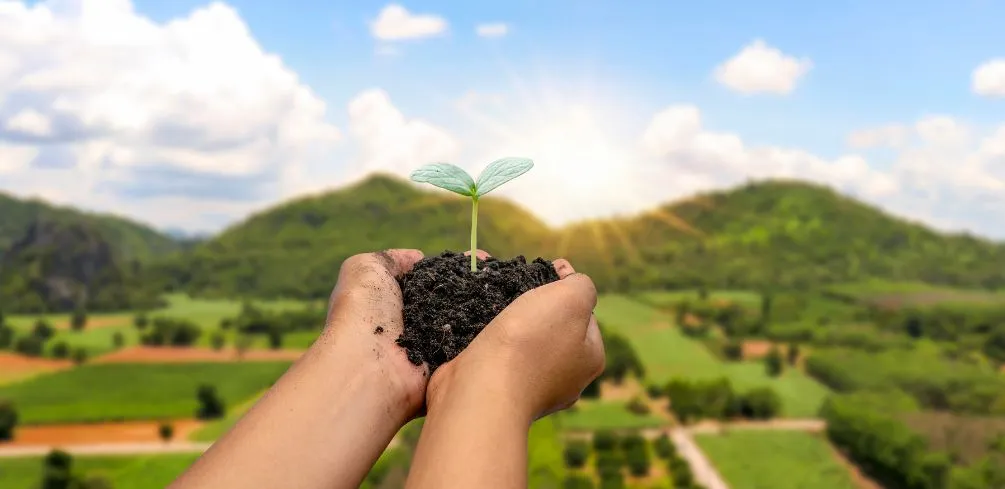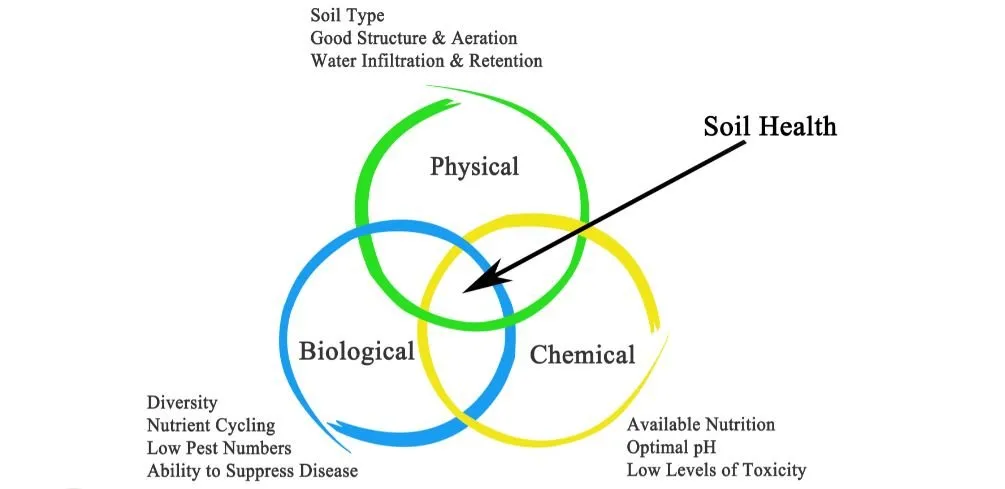Soil erosion is a primary environmental concern, one that can have severe consequences for our planet. With a greater understanding of how soil erosion affects the environment, we can take steps to reduce the negative impacts of this process.
This article will explore why soil erosion is terrible for the environment and how individuals can help address this issue.
Soil erosion occurs when the top layers of soil are removed by wind or water. It is a natural process, but when it occurs more rapidly than new soil can be formed, it has damaging effects on biodiversity, water quality, and agricultural productivity.
In particular, soil erosion contributes to land degradation and desertification around the world. As such, it is important to understand how this process affects our environment and what we can do to address it.
The impacts of soil erosion are far-reaching and complex; however, individuals have the power to make a difference in reducing its effects on our planet. By understanding what causes soil erosion and adopting practices that help prevent it from occurring, we can ensure that our environment remains healthy and productive for many years to come.
This article will explain why soil erosion is bad for the environment as well as provide guidance on how everyone can contribute towards reducing its impacts.
Definition Of Soil Erosion
Soil erosion is a natural process that occurs when the top layer of soil is removed and carried away by the wind, rain, or other forces. It can be caused by human activities such as overgrazing, deforestation, or improper agricultural practices. As this process continues, it can lead to serious environmental problems like loss of topsoil, reduced water quality, and increased flooding risks. To understand how erosion affects the environment and how we can help prevent it, we must first define what soil erosion is.
Soil erosion can be defined as the removal of soil particles from one place to another by wind or water. The particles are usually carried away by rivers or streams but can be transferred through the air during storms or heavy winds.
As these particles are moved from one place to another, they leave behind a barren landscape that lacks the nutrients necessary for plants to grow and thrive. This lack of vegetation leads to an increase in runoff which further contributes to soil erosion.
The effects of soil erosion can be devastating for both humans and the environment alike. Not only does it reduce crop yields due to nutrient loss and make land uninhabitable due to its barrenness, but it also damages ecosystems by reducing biodiversity and contributing to global warming.
Soil erosion is a serious issue that needs attention if we are going to protect our environment for future generations. Fortunately, there are steps we can take today that will help us prevent further damage from occurring.
Causes Of Soil Erosion
Soil erosion is the process of soil particles being displaced from their original location and moved elsewhere. It is a naturally occurring process, but human activities such as deforestation, agricultural practices, construction activity, and climate change can accelerate it significantly. Deforestation contributes to soil erosion by removing the protective vegetation that acts as a barrier against the wind and rain.
Agricultural practices, such as plowing, can cause soil erosion by leaving the surface unprotected and exposed to wind erosion. Construction activity may also lead to increased levels of soil erosion as land is cleared to make way for roads or buildings. Finally, climate change can alter weather patterns leading to an increase in severe storms that have a greater potential for causing soil erosion.
The consequences of soil erosion are far-reaching and can have serious impacts on the environment. Eroded soils are more prone to flooding and landslides, which can lead to the destruction of land and property.
In addition, eroded soils have reduced fertility due to the loss of important nutrients needed for crop production. This leads to decreased productivity in agricultural lands, making it difficult for farmers to grow crops or raise livestock on them. Moreover, eroded soils contain pollutants from land uses such as mining or industrial activities that can enter into water sources downstream, leading to water pollution.
It is, therefore, essential that steps are taken to prevent or reduce soil erosion in order to protect our environment and natural resources for future generations.
- Solutions include planting trees and other vegetation covers on slopes in order to reduce runoff.
- Reducing tillage operations; planting cover crops
- Using terraces or contour plowing
- Reducing chemical fertilizer application
- Practicing conservation farming techniques such as no-till farming
- Maintaining permanent vegetative cover
- Regulating development activities in sensitive areas; implementing watershed management plans
- Restoring wetlands which act as natural buffers against floods and help retain nutrients in soils, thereby reducing its loss through runoff or leaching into water bodies downstream.
Impact On The Environment
It may be surprising to some, yet soil erosion is actually a major environmental problem. The impact it has on the environment is significant and far-reaching, causing irreparable damage to both ecosystems and plant health.
Soil erosion can lead to land degradation as nutrient-rich topsoil is lost and replaced with less fertile material. This can have severe consequences on vegetation, affecting its growth and survival.
The effects of soil erosion often go beyond just the physical environment. Erosion can also lead to an increase in water pollution as eroded soils are washed away into rivers and streams. This can result in decreased water quality for aquatic life, as well as for humans who rely on these sources for drinking water or recreational purposes. And, sediment from eroded soils can clog irrigation systems and disrupt coastal habitats by increasing turbidity levels.
At the same time, soil erosion can reduce crop yields due to the loss of essential nutrients such as nitrogen and phosphorus that help plants grow better and more efficiently. In extreme cases, it can even cause desertification – a process in which once productive land becomes barren due to a lack of vegetation cover and excessive wind or rain erosion.
Fortunately, there are measures we can take to mitigate soil erosion. Planting groundcover crops such as grasses or shrubs will help create a barrier between soil particles and wind or rainwater that carries them away.
Conserving natural resources like forests and wetlands will also aid in preventing runoff from washing away valuable topsoil layers. Finally, implementing sustainable agricultural practices such as terracing hillsides or using cover crops will help slow down the rate of erosion over time while providing us with additional benefits like improved air quality or increased biodiversity.
Strategies To Combat Soil Erosion
Soil erosion has a detrimental effect on the environment, and it is important to implement strategies that help combat it. There are many ways to prevent soil erosion and improve soil conservation.
One of the most common practices is the use of preventative measures such as planting vegetation, installing terraces, or introducing sediment traps. These methods help reduce water runoff, which carries away soil particles.
Planting vegetation such as trees, shrubs, and ground cover also helps reduce soil erosion by holding the soil in place with its roots. Additionally, terraces are used to slow down runoff, and sediment traps can be installed in channels or waterways to capture large amounts of sediment before they reach bodies of water.
Erosion control also involves using practices such as mulching or tilling fields after harvesting crops. Mulching helps keep moisture in the ground, while tilling helps break up hard soils so that water can penetrate deeper into the ground rather than running off over the surface.
Furthermore, leaving crop residues on fields can provide additional protection against wind and water erosion by trapping small particles of soil from blowing away or washing away with rainwater.
Overall, there are many ways to combat soil erosion and improve soil conservation for a healthier environment.
By implementing preventative measures such as planting vegetation, installing terraces and sediment traps, mulching fields after harvest season, or leaving crop residues behind on fields, individuals can take steps to protect against wind and water erosion while promoting healthy soils for future generations.
Actions To Take For Prevention
The environment is like a jigsaw puzzle, with each piece carefully balancing the others and playing an important role in preserving life. Soil erosion is like a missing piece that can cause the entire puzzle to collapse if it isn’t addressed quickly and effectively.
Here are some preventive measures that can help reduce the damage caused by soil erosion:
- Developing soil conservation strategies: This includes implementing practices such as terracing, contour plowing, and strip cropping to reduce runoff and slow down the water flow over land.
- Planting trees: Trees absorb rainwater and prevent excess water from running off into rivers, streams, or other bodies of water. They also protect soil from wind erosion, reduce flood risk and provide habitat for wildlife.
- Increasing ground cover: This is an effective way to reduce runoff as well as conserve soil moisture. Covering bare soil with mulch or grass clippings will help to trap sediment particles before they are washed away by rainwater or surface runoff.
It’s important to take action now to minimize the impact of soil erosion on our environment and protect our planet for future generations. By investing in preventive measures like these, we can make sure our natural resources are conserved and maintained for years to come.
Frequently Asked Questions
What Are The Long-Term Effects Of Soil Erosion?
Soil erosion is a process that results in the gradual removal and displacement of topsoil from one area to another. This affects agricultural productivity, as the soil is depleted of essential nutrients, leading to soil degradation and decreased crop yields. Additionally, the long-term effects of soil erosion are far-reaching and can be detrimental to the environment over time.
The most obvious effect of soil erosion is the physical loss of soil. Over time, this can lead to land being rendered unusable for agricultural purposes due to reduced nutrient content, increased acidity levels, and waterlogging.
In turn, this can have a negative effect on local wildlife populations as well as human communities who rely on agriculture for their livelihoods. Furthermore, soil erosion can lead to an increase in sedimentation in rivers and streams which can reduce water quality and negatively affect aquatic ecosystems.
As a result of its long-term effects, soil erosion has been linked with climate change due to the release of carbon dioxide into the atmosphere, which contributes to global warming.
Additionally, it has been argued that soil erosion could potentially exacerbate existing weather patterns by increasing the likelihood of flooding or droughts in certain areas. Therefore, it is important to take action in order to prevent further destruction caused by this phenomenon.
Various methods exist for mitigating soil erosion, such as steep terracing slopes and planting vegetation to protect against runoff or wind damage.
These measures allow for better land management practices while helping maintain healthy soils through increased organic matter content and improved water infiltration rates. Furthermore, implementing sustainable farming practices such as no-till agriculture also helps reduce adverse effects caused by soil erosion while providing farmers with additional economic benefits over time.
How Can I Tell If Soil Erosion Is Occurring On My Property?
Soil erosion can have a devastating impact on the environment, but detecting it early is vital. According to the United States Environmental Protection Agency, approximately two billion tons of soil are lost every year due to erosion. Knowing how to tell if soil erosion is occurring on your property can help mitigate its potentially damaging effects.
Several signs indicate soil erosion has taken place. Some of these warning signs include visible changes in the landscape, such as gullies, bare spots, and exposed tree roots; changes in water flow patterns; and increasing sedimentation levels in nearby streams or ponds. Additionally, inspecting vegetation for damage from wind or water can be an indicator of soil erosion.
Here are four important steps you can take to detect signs of soil erosion:
- Look for visible changes in the landscape, such as gullies and exposed tree roots
- Inspect vegetation for damage from wind or water
- Examine nearby streams and ponds for increased sedimentation levels
- Check for changes in water flow patterns
Having knowledge about what indicators to look out for when trying to detect soil erosion can help protect your land from further damage. It’s important to keep an eye out for any potential signs of soil erosion so that appropriate measures can be taken before it becomes too difficult or costly to restore your property.
What Is The Most Effective Way To Prevent Soil Erosion?
Soil erosion is a major environmental concern, as it can cause damage to land and water resources. One of the most effective ways to prevent soil erosion is through the use of preventative measures such as soil conservation, controlling runoff, and planting cover crops.
These measures can help protect against water and wind erosion, as well as improve crop yields.
When it comes to soil conservation, this involves protecting the topsoil from wind and water erosion by using methods such as terracing, contour plowing, or strip cropping. Other methods involve reducing the amount of bare ground exposed to wind or water by planting cover crops such as grasses or legumes that have deep root systems.
Controlling runoff is another important measure for preventing soil erosion, which can be done by constructing ditches or berms along slopes to slow down the flow of rainwater.
Finally, land management practices such as crop rotation and no-till farming can also be used to reduce soil erosion. Crop rotation helps maintain organic matter in the soil by alternating between different types of plants each year, and no-till farming minimizes disturbance of the soil surface, thereby reducing runoff.
Moreover, using mulch on top of bare ground can also help reduce both wind and water erosion by providing a protective layer between the ground and rainwater.
These preventative measures are essential for protecting land resources from harmful effects caused by erosion. By implementing these strategies on your property, you can help ensure that your land remains safe from its damaging effects.
What Is The Cost Of Implementing Strategies To Combat Soil Erosion?
The cost of implementing strategies to combat soil erosion can vary based on the type of method used. There are many soil erosion prevention techniques, such as stabilizing the soil with plants, building terraces, and using diversion ditches or sediment basins. Each of these methods has a different cost associated with it that must be considered when attempting to prevent soil erosion.
One of the most common methods for preventing soil erosion is by stabilizing the soil with vegetation. This often requires an initial investment in plants and other materials, along with ongoing maintenance costs such as water and fertilizer.
Building terraces is another technique for preventing soil erosion which can involve high upfront costs for materials and labor. Diversion ditches and sediment basins are also used for preventing soil erosion but may require an even larger initial financial outlay due to their size and complexity.
Ultimately, the cost of implementing strategies to prevent soil erosion will depend on several factors, including the type of strategy being used, the size of the area needing protection, and any additional materials or labor required. Here is a 4-item list that summarizes some key points:
- The type of method chosen will affect how much money needs to be invested in preventing soil erosion.
- Stabilizing the soil with vegetation requires an initial investment plus ongoing maintenance costs such as water and fertilizer.
- Building terraces involves high upfront costs for materials and labor.
- Diversion ditches and sediment basins require an even more significant initial financial outlay due to their size and complexity.
In order to determine which strategy would work best for your situation, it is important to consider all factors related to cost before making a decision about how best to prevent soil erosion in your area. Taking this into account can help ensure you make the best possible decision that meets your budget needs while also helping protect against damaging environmental impacts from unchecked erosion.
What Are The Main Sources Of Soil Erosion?
Soil erosion is the process of wearing away and removal of topsoil from a land mass by natural or manmade agents such as wind and water. It has far-reaching consequences on the quality of the environment, economy, and society. A key source of soil erosion is agricultural practices such as plowing and cultivation, which can lead to increased soil loss due to wind erosion. Other sources include construction, deforestation, overgrazing, and inadequate irrigation management.
Agriculture ranks as one of the leading causes of soil erosion due to its reliance on tillage or plowing to prepare fields for planting. The tilling process leaves topsoil exposed to wind and water erosion which can quickly transport valuable nutrients away from a field before they are able to be absorbed into the soil.
Wind erosion, in particular, is a major threat since it can occur regardless of precipitation levels and is difficult to control without changes in farming practices.
Construction activities also contribute significantly to soil erosion through their direct impact on land cover, resulting in an increase in runoff and sedimentation into nearby waterways. Deforestation exacerbates this effect by reducing vegetation cover, which would otherwise impede runoff velocity and reduce sediment delivery.
Overgrazing further reduces vegetation cover while also compacting soils with hoof traffic making them more prone to erosive processes triggered by raindrops or melting snow. Inadequate irrigation management can result in dry soils becoming vulnerable to wind erosion when winds pick up loose particles, as well as increased runoff which leads to greater sediment transport during heavy rains or floods.
- Agriculture: Plowing and cultivation lead to increased soil loss due to wind-erosion
- Construction: Directly impacts land cover, causing an increase in runoff & sedimentation
- Deforestation: Reduces vegetation cover leading to a greater risk of erosion
- Overgrazing: Reduces vegetation cover & compacts soils making them more vulnerable
- Inadequate Irrigation Management: Dry soils become vulnerable & increases runoff risks
These five sources have serious consequences for both the environment and society at large, yet some strategies can be employed both at an individual level or collectively through policy measures that aim at mitigating their effects.
Awareness campaigns are needed that emphasize how citizens can play a role in helping protect our natural resources from these threats posed by soil erosion.
Conclusion
Soil erosion is a serious environmental issue that must be addressed. The long-term effects of soil erosion can range from decreased crop yields to increased flooding, and it is important to know how to detect and prevent it.
One effective way of preventing soil erosion is the implementation of strategies such as contour plowing and terracing. While these methods come with an initial cost, they are necessary in order to ensure the sustainability of agricultural practices. Additionally, soil erosion can originate from both natural causes and human activities such as deforestation, construction, and unsustainable farming techniques.
Some may argue that soil erosion is not a significant problem due to its slow onset. However, although it may not have an immediate effect on the environment, the cumulative damage caused by soil erosion over time can be catastrophic if left unaddressed. As such, it is essential for individuals and communities alike to take proactive steps in order to mitigate the effects of soil erosion before it becomes too severe to remedy.
By understanding the sources, assessing their properties for signs of soil erosion, and implementing strategies to prevent further degradation, people can actively work towards protecting their environment from this destructive force. Ignoring or underestimating the consequences of soil erosion will only make matters worse; therefore, we must act now in order to protect our land for future generations.
